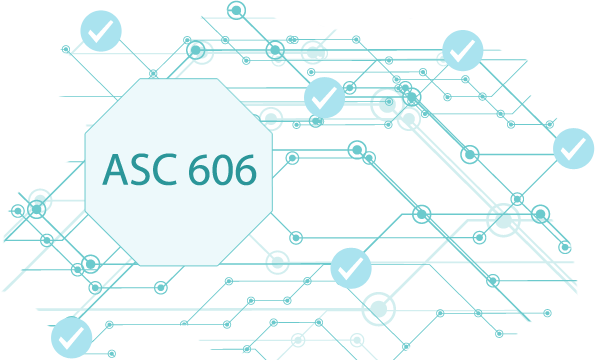ASC 606 compliance was mandated a little over five years ago when regulators issued new accounting standards designed to change the way organizations approach revenue recognition. The goal of the regulation: improve the financial reporting of revenue and, at the same time, the comparability of the top line in financial statements globally. The final piece of the implementation timetable is here: the standard is required for nonpublic (private) companies and organizations (including not-for-profits) for annual reporting periods that began after December 15, 2018, and interim and annual reporting periods after those reporting periods. The provisions for public companies went into effect in 2017.
- What this means: companies and organizations reporting on a calendar year will report revenue, for the first time, in accordance with ASC 606 in their financial statements.
- Who this affects: any organization that either enters into contracts with customers to transfer goods or services or enters into contracts for the transfer of non-financial assets, unless those contracts are within the scope of other standards (for example, insurance contracts or lease contracts).
- Why this matters: companies may need to review how revenue is currently recognized and potentially adjust according to the new standard.
Disclosure Requirements: Private vs. Public Companies
The timeline for private companies follows by a year implementation of ASC 606 compliance for public companies. The requirements for the two classes of companies differ in the following ways.
Disaggregation of Revenue
Unlike public companies, which must disaggregate revenue into multiple categories, private companies can choose not to disclose disaggregated information. They must, however, provide revenue information disaggregated by the timing of transfer of goods or services. Private companies also do not have to provide segment reporting data.
Contract Balances
This is required of public and private companies, however private companies do not need to disclose reasons for significant changes in contract balances, reasons for timing of performance obligations and payment terms, nor do private companies need to recognize revenue in the current period that was included in the opening contract liability balance.
Performance Obligations
Private companies need to disclose information about the nature of their performance obligations, including upon-shipment vs. as-services-are-rendered; significant payment terms; nature of the goods or services; obligations for returns and refunds, and types of warranties and related obligations.
Remaining Performance Obligations
Public companies are required to disclose the “aggregate amount of the transaction price allocated to the “remaining”
performance obligation” and when the company expects to recognize that amount as revenue. Private companies can elect not to disclose this information.
Significant Judgments
Requirement for public companies: disclose information about significant judgments they used in determining the amount and timing of revenue recognition; determining the transaction price, and allocating the transaction price to the performance obligations in the contract.Private companies may elect not to disclose the majority of the information required for public companies; however, at a minimum, they must disclose:
- Methods they used to recognize revenue for performance obligations satisfied over time (e.g., output or input methods)
- Methods, inputs, and assumptions they used to evaluate whether an estimate of variable consideration is constrained
Contract Costs
Public companies must disclose quantitative and qualitative information about their contract costs. Private companies, however, may elect not to disclose any information about their contract costs.
Practical Expedients
Private companies don’t have to disclose whether they have used any of the ASC 606 or ASC 340-40 practical expedients related to the determination of whether a significant financing component exists and the capitalization of incremental costs to obtain a contract. Public companies are required to disclose their election of practical expedients.
What Private Companies Should Expect from the Process
Given the year-earlier experience of public companies, experts say private-company executives would be wise to be informed by the lessons of the past year.
“Their counterparts in public companies. . . have spent the last year evaluating customer arrangements to come to a definitive, organization-wide view on how to recognize revenue from different types of contracts with customers and at what points in time to do so,” writes John Poth, Private Company Services, Revenue Recognition Partner Champion, at PWC. “It is not a simple task.”
Here’s what the public-company experience foreshadows for private companies:
- It likely will take much longer than they think it would – or should
- Resources will be sucked away from its internal accounting function
- Executive teams may be a bit testy as they will need – often collectively – to make important and timely decisions about contract strategies
“Some of the operational aspects of the new revenue standard seem to present the greatest challenge,” observes Eric Knachel, senior consultation partner, National Office, Deloitte & Touche LLP. “There is a significant amount of judgment around applying the new standard, and while similar facts should be followed by similar judgments; in practice, organizations may bump up against the notion that facts can be interpreted differently.”
- Companies will need to implement deft coordination across the business
- Internal training – beyond that anticipated for accounting staff – will be necessary
- The entrenched budgeting and financial close process will be affected
- Income taxes will be affected by the timing changes relating to revenue recognition
- Governance and legal requirements will increase significantly as boards and other oversight groups seek information and ask questions
- Compensation plans will need to be addressed – and perhaps altered – to bring them into alignment with revenue recognition
BillingPlatform Supports ASC 606 Compliance
BillingPlatform is compliant with ASC 606 and enables enterprises in every industry to recognize revenue according to every modern reporting standard. ASC 606 created an industry-neutral revenue-recognition standard that all companies must follow. Not every billing system can launch complex pricing strategies involving deferred revenue without additional support.
You can operate in full confidence with automated and compliant revenue recognition because BillingPlatform’s rules-based revenue-recognition engine can be configured to recognize any pricing model in line with globally accepted accounting principles.
Revenue recognition in BillingPlatform comprises three categories:
- Point-In-Time RevRec is the most basic feature and allows companies to recognize revenue as soon as an invoice goes out or when a service is rendered to the customer.
- Scheduled RevRec allows companies to recognize revenue based on a set interval of time. This could be daily, weekly, monthly or a custom time interval and can be different for each individual contract, customer, or group of customers.
- Obligations RevRec, which is a special feature unique to BillingPlatform, enables companies to recognize revenue based on milestones set in the system. These revenue events can be anything that’s relevant to each individual company or contract, such as the completion of a job, a purchase order, the creation of an invoice, a usage threshold, etc. Revenue recognition can also be broken down into segments, with each part of the revenue recognized during a different event or timeframe.
This can be helpful during installations, for example, when a customer is charged half upfront and half when the installation is completed. The system can be configured to recognize revenue at different milestones, % complete, or hours worked. The possibilities far exceed this simple example.
Want to Simplify Your Revenue Recognition?
Because of our metadata model, Revenue Recognition in BillingPlatform can be defined based on any element of the system, making it easy to customize to any scenario. We understand enterprise needs and accommodate extreme complexities in billing, rating, invoicing and, now, revenue recognition. This makes it possible to stay compliant and keep business running regardless of industry, geography, or strategic objective.
BillingPlatform understands the new account regulations and terminology can all feel overwhelming. To help make sense of it all, we offer the Definitive Guide to Modern Billing Models white paper. Click here for a complete billing term glossary today.



